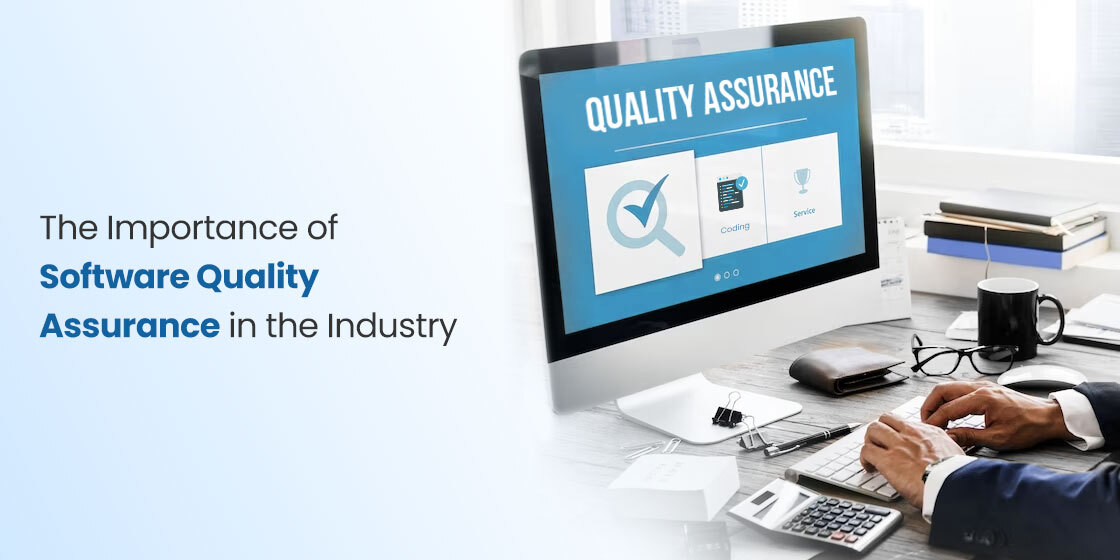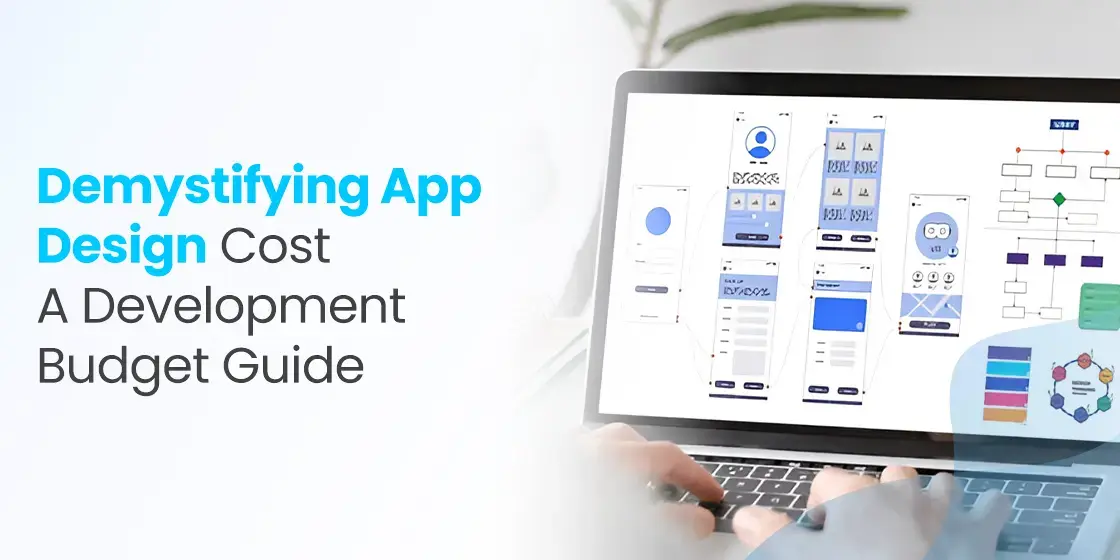Table Of Content
Discover How Software Quality Assurance Can Help You Improve Your Deliverables
In recent years, the field of software quality assurance has been gaining more and more traction, as businesses are realizing its worth in producing top-quality products consistently. However, there is a lot of ambiguity when it comes to assuring software quality, as many people do not know what the process entails.
In fact, for a long time, the developers themselves reviewed their own codes to check compliance to a set of “standards”. However, as the competition got tougher, and businesses realized that even a small issue could affect their product’s perceived quality, thus negatively affecting the company.
That is when the concept of quality assurance for software projects came into being. Today, these specialists are tasked with ensuring that the deliverables developed by software engineers and developers are free of issues of any kind.
However, despite its apparent popularity, many small businesses are still on the fence about implementing a separate quality assurance department for their projects. So, let’s take a look at how professional QA and software quality assurance services process and manage resources in order to help you deliver quality products to your consumers.
Software Quality Assurance – An Overview

Software quality assurance, also called SQA, is a process that ensures that the software you deliver conforms to the preset collection of standards. Now these standards can be best practices, industry standards, client requirements, and much more.
Now, it may seem as if QA testing is just another step in the software development process. However, that couldn’t be further from the truth. In fact, SQA is actually run in parallel to the entire software development process. That ensures that security standards are met at every step of the process, reducing the chance of necessitating a return to an earlier step to redo something.
Now, there are a lot of reasons why the SQA process is performed. Let’s take an example where you agree to deliver a mobile app to a client that conforms to certain specifications. During the development, you do not run a quality assurance in parallel. At the end, you deliver a non-compliant app to your client, who angrily asks you to fix the issues caused by the omitted QA process.
Now, besides hurting your respect in the industry, you have to fix the issue on your own dime too. This failure to use a proper SQA resulted in your having to redo a section of the app, typing up your resources and costing you more in the long run.
When we talk about quality assurance, it refers to all aspects of the process, whether its frontend or backend. In short, it helps us identify issues and problems at a point before they turn in to actual, harmful problems.
On the outside, a business’s success is ascertained by factors like efficiency, ease of maintenance, and reliability. However, in order to ensure that these factors are met, there are certain factors that need to be addressed by the software quality assurance team.
The SQA Process

Now that you have an idea of what SQA entails, the next step is to understand how the software quality assurance process takes place. We know that the process runs in parallel to the development cycle, and we know it is supposed to check your deliverables for issues and problems against a set of quality controls and standards.
But what are the steps to it in the first place? How does a business initiate the process of SQA in the first place, and what phases does it go through? Does it somehow relate to the software testing lifecycle? Let’s take a look at the basic software quality assurance process, and discover how you too can implement SQA in your development practices too.
Basically, there are four core steps to the SQA process, which every organization or individual planning on implementing software quality assurance needs to do. Without them your SQA strategy will fail from one aspect or another.
Plan
The first step to any good software testing strategy is planning it well. You need to plan and create all the necessary processes required for the quality assurance process, based on the objectives and needs of SQA for the project. The aim should be to address all aspects you need to in order to deliver a top-tier product at the end.
Test
Once you are done with the planning phase, the next step is to develop the required testing processes and test them to see if they are designed to test the aspects of the project specified in your SQA planning. Moreover, this is also the phase where you make changes to the existing processes in case they need to be amended to address a project aspect better.
Monitor
Once your testing processes have started to be implemented, you need to monitor them closely. Based on those observations, you may need to make some modifications, as it is possible that those processes were unable to meet or satisfy the predetermined needs specified in the project planning phase.
Improve
Finally, you should have a plan to implement any necessary changes that might be needed in order to achieve a constant improvement of the quality assurance processes you have developed. Without constant improvement, your processes will not be able to address the standards of quality you plan to achieve for your project.
Approaches to Software Quality Assurance (SQA)

Now that you know what does the software quality process entails, you know that it is an important step towards creating high-quality products consistently. But the question, is their only one approach to SQA? Or are their different strategies to implementing software quality assurance within a project?
Essentially, there are two software quality approaches you can use in order to test your project for quality.
- Software quality through defect management
- Software quality through attributes management
Software quality assurance via Defect Management
As the name suggests, this approach focuses on providing quality by managing defects within the project. Now, the way it works is that it sorts the known and identified defects into a list based on their severity. That means that it knows what defects to address based on their severity in order to achieve the desired level of quality within the project.
Experienced software development teams often use software testing tools like the defect leakage matrix as well as elaborate control charts to monitor and improve their software development processes. However, this technique has its drawbacks, as it relies on issue resolution for it to be a success.
Software quality assurance via Attributes Management
Unlike the previous approach, SQA via attributes management refers to the process of managing project quality by analyzing and monitoring project performance. The process works by directing the software developers to focus on specific quality attributes for the project by employing different software testing types. There are varieties of attributes that can affect software quality, with the most common of them being:
- Reliability
- Usability
- Efficiency
- Maintainability
- Portability
Software Quality Attributes That Define A Well-Built Product
Now, many different quality attributes can affect the quality of the project being produced. Moreover, some attributes overlap each other in terms of their definitions and work. However, the five major attributes that you should consider for your project include:
- Reliable
When we talk about reliability, it represents the project’s ability to work seamlessly under different operational environments without crashing. This ability to return the right results despite handling different environments and operating nonstop for a long time is how you can calculate a project’s reliability.
- Usable
Usability is another important factor of quality. Whenever you create a project, you develop it for your consumers. And consumers can come in a variety of flavors. Some will find your product easy to use, while other may have a hard time with the learning curve. Therefore, your product should be as easy and intuitive to learn and understand as possible for it to be user-friendly.
- Efficient
Efficiency refers to the ability of your project to utilize the available resources to their maximum potential. This is often measured by calculating the amount of time your software takes to complete a task. If there are more resources available, yet your software is unable to use them to speed up its processing, then it is not efficient.
- Maintainable
Another important factor of quality for nay software project, is its ease of maintenance. Software need to be updated from time to time, adding new features, optimizing existing processes, and more. And if it is difficult to maintain and modify it, then your project cannot be said to be easily maintainable.
- Portable
Finally, portability refers to your system’s ability to run and work efficiently on a variety of different platforms and operating systems. For example, is your database portable from Microsoft-based environment to a Linux environment? Can your project be viewed on mobile as well as desktop? These are just some examples of portability.
Why is SQA Important?

Now that we have seen what software quality assurance process entails, and how it can be implemented in order to improve your project quality, the question is – how does it help our business?
Let’s take a look at a few benefits that make software quality so important for your business.
- Time and Cost Efficient
Both time and cost are important factors when it comes to software development. In many cases, cost is automatically bound to time, as a project running late due to changes required for quality control may end up costing more. Therefore, if you implement SQA, you can ensure that your project is both time and cost efficient.
- Allows Production of a Competitive and Robust Software Product
As providing quality is what SQA is all about, it can be achieved by ensuring that your product is reliable and stable. A stable and robust product helps in many more ways too, such as allowing your product to be more competitive among similar products on the market.
- Helps You Manage Your Company Reputation
Managing your company’s reputation is something that cannot be ignored when developing a project, and therefore needs to be addressed. If your product is checked for issues and problems before being released to the market, you will be able to ensure that the quality of the product is high enough to support your company reputation.
- Ensures That Your Software is Secure
Security is highly important when it comes to delivering quality, and managing your company’s reputation. If your project is checked for any security vulnerabilities and issues, you will be able to guarantee that your consumers’ data will be safe and secure within your software project.
- Improves Customer Satisfaction
It is obvious that if you software project, is secure, robust, well-functioning, and easy to use, customers will be highly likely to adopt it and be satisfied with it. Therefore, we can see that performing software quality assurance on your project helps you receive high customer satisfaction, as it manages to fulfill all their expectations and requirements.
Conclusion
To sum it up, software quality assurance is an important part of software development, as it allows you to deliver high quality, valuable software products consistently. And unlike what many people believe, it is not a process that is performed after a project is developed.
In fact, this process is often called an umbrella process, which means that it is made to be performed throughout the process, with each phase of the software development project having its own set of SQA KPIs.
Therefore, if you were unsure about the importance of quality assurance in software development, the article above is a great place for you to start.
FAQs
| 1- What is meant by software quality assurance? Software quality assurance (or SQA for short) is the ongoing process that ensures the software product meets and complies with the organization’s established and standardized quality specifications. |
| 2- What are the 4 types of quality assurance? The four types of quality assurance are: – pre-production inspection (PPI) – during production inspection (DPI) – pre-shipment inspection (PSI) – container loading/loading supervision (LS). |
| 3- What is the first step of QA? Identification of customer need is the first step of QA after which further basic elements of QA are identified. QA depends not only on QC but also on the activities of the entire company. |
Empower your digital initiatives with BariTechSol, a premier custom software development company. Our skilled team tailors cutting-edge solutions to your unique needs. Elevate your tech experience and stay ahead in the digital realm. Partner with BaritechSol and code the success of your next big idea.


